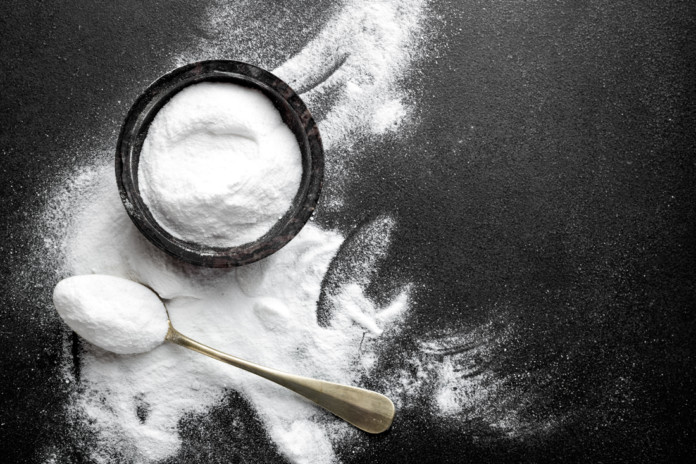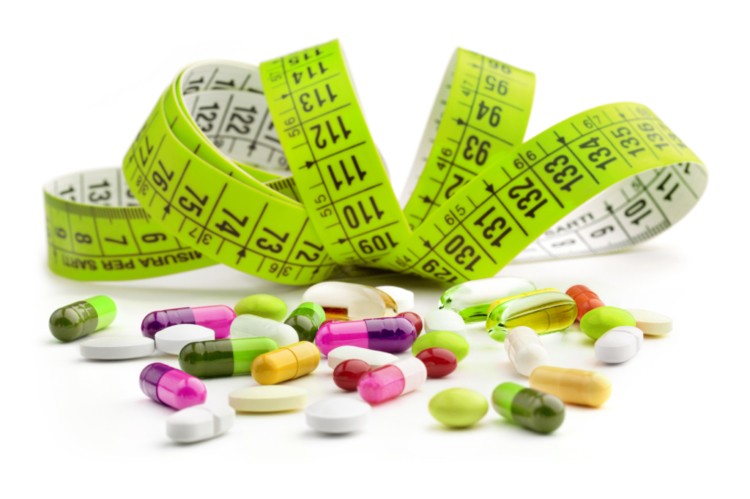HEALTH & WELLNESS
Enhancing Recovery with Creatine
Published
5 years agoon
By
fitinstyle
Enhancing recovery between workouts is a relatively common topic of discussion. Delayed onset muscle soreness (DOMS), temporarily hindered performance, and even general fatigue are all natural, yet annoying aspects of the recovery process. Although other strategies to augment recovery exist, the recovery process is influenced by nutrition more than any other modifiable factor.
Arguably, many sports nutrition topics addressed by coaches and trainers also revolve around recovery. Yet we still seem to fall short when providing our clients with fundamental knowledge in this area. While todays’ go-to recommendation seems to be “eat whole foods”, this terribly vague advice is also inadequate for many training programs. It is especially frustrating to those who push athletes to their highest levels. I do agree that most supplementation strategies should be intended to fill the gaps left after adequate nutrition is employed. However, there are some supplements that provide a necessary boost to the recovery process in high-level training programs. In fact, some supplements allow us to surpass the gains likely to be made from whole foods alone.
Creatine is an incredibly popular supplement, and for very good reason. Although it is found it in food, it appears in such small amounts that it could never completely saturate our phosphocreatine stores through diet alone. Creatine acts very much like the macronutrient Carbohydrate in the way that it fuels our energy systems. The PC-ATP energy system utilizes a form of Creatine as a raw source of energy like the way other energy systems utilize carbohydrates. Moreover, Creatine stores are used up to the point of being completely depleted during exhaustive resistance training. From this perspective, providing the body with supplemental Creatine could be a means to enhance recovery beyond what is possible through whole food diets alone. However, this only speaks to recovery through the replenishment of lost energy—not necessarily cellular repair.
Defining Recovery
For the sake of practicality, I often place recovery into one of two categories— replenishment or repair . Before pointing out how supplements enhance overall recovery, we might create a more meaningful dialogue by discussing these very different aspects of recovery separately. This allows us to better communicate exactly how/when/why a given strategy might work (or not work). Without such parameters, the discussion on nutrition can get messy very quickly.
Replenishment
Certain foods are veritable “gold mines” for nutrient replenishment. Carbohydrate sources, for example, restock the glycolytic stores throughout muscle tissue and the liver that become depleted during strenuous exercise. The more anaerobic the workout, the more necessary it is to restock glycogen stores before the next bout.
This also means that: the more aerobic the workout, the less important it is to restock carbohydrates. This helps to explain why endurance runners can get away with low carb diets whereas football players would quickly derail their performance.
(Side note: This is not to say that aerobic athletes don’t benefit tremendously from carbohydrates. It’s just that anaerobic athletes really can not function at all without them).
Electrolytes are also vitally important when replenishing the body from long duration workouts. Electrolytes are often found in carbohydrate food sources. Therefore, carbohydrate-rich foods act as great sources of replenishment for both glycogen stores and electrolytes. However, trainers or nutritionists that don’t include certain supplements is potentially setting the athlete up for failure.
Sports drinks, such as Gatorade, often get a bad rap for the amount of sugar they contain. This criticism should be seen in context, as this “anti-sports drink” position is usually aimed at sedentary non-athletes. In fact, this easily digestible form of sugar could be vital to optimizing performance and recovery in athletes who are constantly moving. Sports such as triathlons, basketball, and football require long-duration performances and the athletes need carbohydrate in an easily-digestible form. Eating whole foods, such as fruits, often lead to digestion issues, and drinking plain water may leave the athlete depleted near the end of the game.
These characteristics of carbohydrates should be common knowledge, and I’ve written on the topic numerous times before. I mention it here because of a unique, relatively new benefit of Creatine. Not only does Creatine replenish phosphocreatine stores as noted earlier, but Creatine may also enhance the rate of glycogen replenishment. Roberts et al. (2016) showed that post-workout glycogen re-synthesis was approximately 82% greater with Creatine than without. This finding has implications for athletes who need to perform repeated bouts of athletic work frequently throughout the week. Significantly greater (and faster) glycogen re-synthesis may be the “Holy Grail” of recovery—at least with regard to replenishment.
Repair
Within a 48 hour period, Creatine does not appear to offer a significant boost in recovery if the training resulted in significant muscular damage, especially from eccentric loading (Boychuk et al. 2016). This would support the notion that muscle damage and strength deficits induced by eccentric-focused training warrants longer recovery times than concentric-focused lifts (Parr et al. 2009). While Creatine supplementation enhances energy availability, it does not necessarily protect against muscle breakdown or enhance muscle repair… at least not in the 48-hour window.
Evidence from studies that exceed 48 hours post-exercise do support enhanced recovery overall. Cooke et al (2009) demonstrated that supplemental Creatine significantly reduced certain markers of muscle damage only after the 48 hour period, through the 7th day after training. The protocol used was pretty severe (4 sets of 10 eccentric-only reps), and it lead to far longer recovery times than those associated with most bodybuilding programs. Trainees in this study were also untrained, which would imply a longer recovery period to begin with. Either way, the study did show the benefits of Creatine for aiding in repair or protection (this was unclear) of muscle from extreme eccentric stressors.
Conclusion
Creatine expedites recovery by directly replenishing phosphocreatine stores. Creatine also appears to indirectly enhance recovery by accelerating the rate of glycogen replenishment when it is consumed alongside carbohydrate. Creatine’s effect on the rate of recovery is likely to be more pronounced in routines that focus on powerful concentric movement as opposed to training sessions that cause a significant deal of muscle damage. So, athletes may be able to bounce back faster from practice, but bodybuilders may still be limited by repair processes such as protein synthesis.
The evidence that Creatine supports the repair aspect of recovery is likely due to protecting muscle tissue from damage in the first place. However, this does not imply that protecting muscle from damage would be of use to bodybuilders.
Muscle tissue damage is one potential trigger for muscle regeneration and hypertrophy. So, while I support Creatine as a means of hypertrophy through the super-compensation effect during recovery replenishment, the jury is still out as to its’ benefits via protection or repair.
HEALTH & WELLNESS
5 Skincare Regimens Perfect for Spring and Summer
Published
3 months agoon
February 21, 2024By
fitinstyle
Spring is in the air! The trees are changing colours, flowers are blooming, and you will notice that your skin feels different too. The sun is getting harsher, and heat and humidity will make their way towards hampering the skin… Well, if you don’t care. If you fail to switch from your heavy winter skincare routine to a light spring one, you could soon be facing the issues of acne, breakouts and dull skin.
This is the perfect time to amp up your skincare and go in for dermatological treatments like chemical peels and laser skin resurfacing. You can also help your skin be spring and summer-ready by using the right skincare ingredients. An intelligent combination of active ingredients can do wonders for the skin and even keep the signs of ageing away. To make the most of the spring weather learn to make the most of your skincare routine.

Best skincare combinations that will work for your skin
The important thing to remember is to pair your skincare ingredients correctly together. Very few are power couples for the skin that might work and benefits your skin. The first trick, of course, is to not use all the products together. To maximise the benefits of the skincare ingredients, here are some important parings you should not miss:
1. Vitamin C with SPF
Vitamin C is an essential ingredient for skin care. It helps protect the skin from sun damage, fights the antioxidants, repairs the skin barrier, promotes collagen production, and acts as an anti-ageing ingredient. When combined with sunscreen, the two work to protect your skin from environmental damage and block the UV rays that filter through the sunscreen.
Also Read: Vitamin C for skin: 7 benefits you must know about
2. Niacinamide with salicylic acid
Niacinamide is an important ingredient for fortifying the skin barrier and treating hyperpigmentation. Salicylic acid is what your skin needs to keep the breakouts away. When they are used together, your skin will benefit from reduced pore size, prevent acne breakouts, improve skin strength and work against the signs of ageing. Together they also improve collagen and elastin fibres giving the skin a youthful glow from the inside.

3. Retinols with peptides
Move the retinol to your nighttime routine during this time of the year. Vitamin A derivatives are the gold standard for home skin care because they treat everything from acne to ageing to fine lines. Peptides help skin cells rejuvenate and repair. Together they correct your complexion, make the skin tighter and give a smoother and plumper look to the skin.
4. Vitamin C and vitamin E
Vitamin C is essential for skin rejuvenation and protection, and vitamin E helps keep the skin supple. You can use them together to protect the skin from oxidative stress and maintain the suppleness of the skin, leaving you to enjoy the weather in its full glory.
5. Hyaluronic acid with exfoliating acids
Spring is a good time for skin repair, and the AHAs and BHAs do a great job of removing the top layer of the skin, making the new skin sensitive to dryness, and hyaluronic acid is a humectant that restores dryness. Hyaluronic acid recharges skin hydration and has long-lasting benefits for the skin.

Things to remember
When using new skin combinations, make sure you take your skin type into account. Always do a patch test first and start when using these combinations 1-2 times a week along with your regular skincare routine and slowly increase the frequency as needed by the skin. Do not over-exfoliate or scrub the skin, focus on good skin care every day for great results instead.

The sports supplements industry is one of the largest industries in the world of sports, especially with respect to revenue. Athletes are often attracted to these supplements by the effective marketing approaches used by marketers to sell these products. In sports, every athlete seeks to stage the best performances to achieve different milestones through their sporting life. The availability of supplements that can enhance the performance of these athletes makes them seductively attractive for these individuals. No one would miss an opportunity to improve their performance, irrespective of the risks that exist. However, there is a need to ensure that these supplements are regulated. The lack of regulations in the sports supplement industry could lead to increased risks for the athletes. Perhaps we need to have a more standard approach to the management of sports supplements.
By Gabriel I. Escalera
First, it’s essential to first have a better understanding of what sports supplements are in the sporting industry. Sports supplements are additional nutrients that individuals can add to their normal diets to improve their physical abilities to perform in physical activities. Active athletes often include supplements in their diets to achieve sufficient nutrition for optimal performance in sports. In addition, athletes also use supplements to compensate for nutritional deficiencies. Most importantly, there is a belief among athletes that supplements significantly improve their abilities, helping them achieve higher performance.
Supplements play an important role in the diets of athletes. As the name suggests, these substances should be used in addition to the normal diet, as opposed to being replacements. There are supplements that have been developed based on scientific evidence. This means that there are supplements in the market that can be beneficial to the athletes who consume them. There are several benefits that athletes can draw from using these supplements. One of the most significant benefits is that they can legally improve the performance of athletes. Other than that, supplements can also be used to attain the required weight for a specific sport’s weight classes. Similarly, they can be effective in losing weight for a specific sport. Supplements can also be used by athletes to build muscles and improve the circulation of oxygen within the body. Moreover, supplements also provide athletes with an option that helps them avoid the temptations of using other performance-enhancing drugs that are banned in most competitive sporting activities. As such, supplements are critical for athletes, especially with respect to the possibility of enhancing performances.
There is a significant difference between performance-enhancing drugs and dietary supplements. There is a complete ban on performance enhancing drugs in the sporting world. However, dietary supplements are allowed within the sporting world. In the United States, the Food and Drug Administration (FDA) does not place strict regulations on sports supplements. So, the manufacturers of these substances are not required to submit samples of their products to the FDA. The only requirement for sport supplement manufacturers is to make a claim of the health benefits of the supplement, based on scientific evidence. However, the FDA does not go beyond that to scientifically verify these claims. Because of this there may be inadequate regulation of sports supplements, and this places the athlete at the risk of consuming substances that may be harmful to them.
The use of supplements has continued to be a controversial topic among the stakeholders in the supplement industry. These controversies tend to keep the conversation going and ensure that we can develop policies and laws that regulate the production and use of sports supplements. There are concerns about the processes involved in the manufacture of some sports supplements. The manufacturing process plays a significant role in determining the final product. The manufacturing process involves the use of different ingredients and processes that are not entirely known or understood.
Another important area of concern over sports supplements is that of the quality of these supplements. The quality of the supplement is critical however, the FDA does not require any quality standards on supplements. The FDA only requires that the manufacturers make a claim about the health benefits of these supplements. The FDA does not require the manufacturer to provide clinical or scientific trial results that verify the claims. This means that the manufacturers have considerable leeway to provide inaccurate information about the supplements to get approval from the FDA. It is also possible that the manufacturers could create the same substance, give it a different name, and different claims to ensure that they are seen as different supplements.
Based on these observations, there appears to be a need to develop programs, policies, and laws that effectively regulate the production and sale of sports supplements. There is a need for the stakeholders, especially the FDA, to change the approach to the management of the supplements in the market. Regulations should be developed to streamline the manufacturing process. Just like in the manufacture of medicines, there seems to be a need to regulate the manufacture of sports supplements. These supplements, when ingested, have the capacity to alter the body’s function. Their effects are similar to medicines. The regulation of the manufacturing process would ensure that there is a standard quality for every type of supplement. It could ensure that the most appropriate ingredients and processes are used in their manufacture.
Quality control measures should also be implemented to ensure that the supplements are not harmful. The quality of the supplements is dependent on scientific validation of their effectiveness in achieving the objectives for which they are created. As such, the FDA should implement programs that would compel the manufacturers to provide scientific verification for the health claims made. This would mean that quality is central to the development and production of the sports supplements. As such, it could provide a regulatory framework established to eliminate the safety risks associated with sports supplements. This way, sports supplements will be able to achieve their fundamental objectives without creating any controversy.
References
Kapoor, A., & Sharfstein, J. M. (2016). Breaking the gridlock: Regulation of dietary supplements in the United States. Drug testing and analysis, 8(3-4), 424-430. Maughan, R. J., Burke, L. M., Dvorak, J., Larson-Meyer, D. E., Peeling, P., Phillips, S. M., … & Meeusen, R. (2018). IOC consensus statement: dietary supplements and the high-performance athlete. International journal of sport nutrition and exercise metabolism, 28(2), 104-125.

When it comes to achieving a desirable body, it is common for people to have problem areas such as love handles, flabby arms, sagging skin, or hips. The market is flooded with products that claim to eliminate fat or tone specific body parts, from creams and applications to gadgets and machines. However, the reality is that you cannot spot reduce, and the attempt to do so is not only futile but also potentially harmful.
There are several reasons why spot reduction is a myth. Firstly, a healthy diet is crucial in eliminating body fat, and consuming high-calorie and high-cholesterol foods can cause the accumulation of fat in problem areas. No matter how many gadgets you use, if you continue to indulge in unhealthy foods, you will not see results.
Secondly, spot reduction is a simplistic approach that overlooks the complexity of the body. Many products claim to require nothing but attaching or applying them to problem areas, neglecting other body parts and requirements. To achieve a healthy body, you need to understand the physiology of your body and what it takes to achieve your goals. For example, if you want six-pack abs, you need to focus not only on abdominal exercises but also on reducing body fat and increasing body mass through a healthy diet and cardio exercises.
Thirdly, there are no shortcuts to achieving a healthy body. Miracle diets, pills, and potions may seem like a quick fix, but they will ultimately lead to a dead end. To achieve a healthy body, you need to put in the work and earn it.
Finally, committing to the health of your body is a lifelong dedication. Even if you achieve a desirable body now, it will not remain so forever if you abuse your diet and lifestyle. Therefore, it is essential to develop a holistic approach to your health and fitness, incorporating not only exercise and diet but also a positive outlook on life.
In conclusion, the key to achieving a desirable body is to do it the proper way. There are no shortcuts or quick fixes, and spot reduction is a myth. Instead, focus on developing a healthy diet and exercise program that addresses the whole body, and commit to a lifelong dedication to your health and well-being. By taking matters into your own hands, you can enjoy the benefits of a healthy body and a positive outlook on life.
Recent Posts
- The Ultimate Guide to Berberine: Unlocking Its Health Benefits and Healing Properties
- The Ultimate Guide to Berberine: Unleashing its Health Benefits for Blood Sugar Control, Weight Management, and More
- The Ultimate Guide to Berberine: How This Natural Compound Can Revolutionize Your Health
- The Ultimate Guide to Berberine: Unlocking Its Powerful Health Benefits for a Healthier You
- Exploring the Health Benefits of Berberine: A Natural Remedy for Diabetes, Cholesterol, and More
Advertisement
Sponsored Ads
TRENDING
-

 HEALTH & WELLNESS5 years ago
HEALTH & WELLNESS5 years agoAcidophilus: A Probiotic Bacterium
-

 herbs3 months ago
herbs3 months agoThe Ultimate Guide to Ashwagandha Extract: Stress Relief and Optimal Health Unveiled
-

 HEALTH & WELLNESS4 years ago
HEALTH & WELLNESS4 years agoHerbs and Essential Oils to Fight Coronavirus
-

 TRAINING & FITNESS5 years ago
TRAINING & FITNESS5 years ago6 Ways to Decrease your Shoulder Pain!
-

 HEALTH & WELLNESS5 years ago
HEALTH & WELLNESS5 years agoWhy Muscles Get Sore
-

 DIET & NUTRITION5 years ago
DIET & NUTRITION5 years agoLow Carb Diet: Carbohydrates Influence on Testosterone
-

 Fitness5 years ago
Fitness5 years ago“No Pain, No Gain” True or Just a Fitness Myth
-

 HEALTH & WELLNESS5 years ago
HEALTH & WELLNESS5 years agoThe Best Shoulder Workout in Only Six Moves













